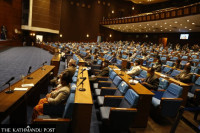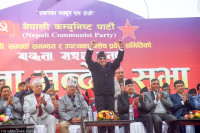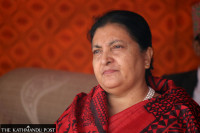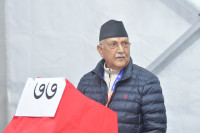Politics
How rigid provisions are hobbling Nepal’s political process
A no-confidence condition is a tool parties can use against prime minister, but such strong conditions aimed at stability have weakened opposition forces in the House instead.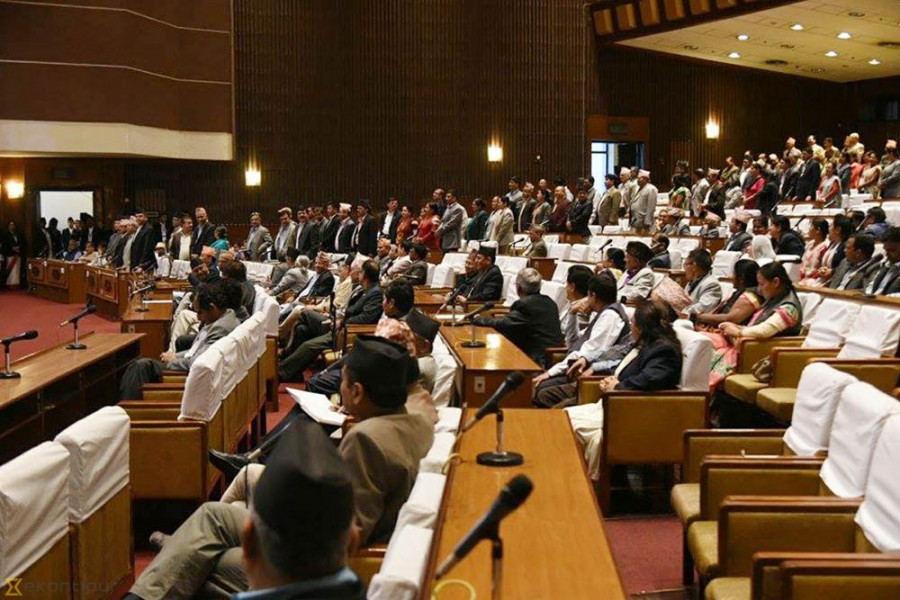
Binod Ghimire
Three major parties in Parliament control 142 seats, enough to unseat Prime Minister KP Sharma Oli, if they so wish, and form a new government. However, it’s Oli who continues to reign supreme.
While the Nepali Congress and the Maoist Centre, the second and third largest forces in the lower house, are at their wits’ end, the Janata Samajbadi Party finds itself at a comfortable position, waiting for others, including Oli, to make a move.
The Maoist Centre was revived as per the Supreme Court’s March 7 decision. Its chairman Pushpa Kamal Dahal, who shared the chair with Oli in the Nepal Communist Party (NCP) until March 7, had formed an alliance with Oli’s arch-rival Madhav Kumar Nepal to unseat the prime minister.
Both Dahal and Nepal had decried Oli’s decision to dissolve the House of Representatives on December 20 and demanded his resignation. After the Supreme Court overturned Oli’s move, the Dahal-Nepal faction, which had a sizeable number of UML leaders, had asked Oli to resign on moral grounds.
However, the Supreme Court’s March 7 decision changed the entire political landscape, effecting, in essence, a split in the Dahal-Nepal faction. Nepal, along with other UML leaders, was left with no option than to return to the mother party.
Dahal is left with his Maoist Centre party, with four of his lawmakers defecting to Oli.
Dahal’s Maoist Centre has the option of withdrawing the support it lent Oli in February 2018, but it has not done so. The Nepali Congress which called Oli’s House dissolution unconstitutional too did not make any move to unseat Oli after the court overturned the dissolution decision.
The Janata Samajbadi Party, the fourth largest force in the House, however, has maintained that it’s up to bigger parties to get the ball rolling.
Analysts say one of the multiple factors that have led to the political stalemate is rigid constitutional provisions.
“In the constitution, drafters incorporated some strong provisions in search of political stability,” Rajendra Maharjan, a political commentator and columnist for the Post’s sister paper Kantipur. “In the parliamentary system, a no-confidence motion is a tool that parties can employ to express dissent with the incumbent government.”
All countries that practise the multi-party democratic system keep this provision of a no-confidence motion, as it is useful in keeping the government in check.
However, stung by Nepal’s history of frequent government changes, the drafters wrote a provision which allows a no-confidence motion only two years after the formation of a government.
Article 100 (4) of the Constitution of Nepal says one fourth of the total number of existing members of the House of Representatives may table a motion of no-confidence in writing that the House has no confidence in the prime minister.
The provision, however, is caveated with a statement that a motion of no-confidence shall not be tabled until the first two years after the appointment of the prime minister…”
“The constitution actually has in a way closed the door for a no-confidence motion,” said Maharjan.
What has made matters even more complicated is Article 100 (5), which says “motion of no-confidence shall also indicate the name of a member proposed for the prime minister.”
In the present context, of the three parties seeking to unseat Oli—the Nepali Congress, the Maoist Centre or the Janata Samajbadi Party—at least two parties must come together, as it will need 68 members to file a no-confidence motion.
The constitution also says if a no-confidence motion, which is filed after two years of appointment of a prime minister, fails, another similar motion cannot be filed for another year.
Analysts say these complexities could have spooked the parties and Oli and leaders from his orbit are taking advantage of such provisions to challenge them for filing a no-confidence motion.
Speaking at a meeting of the House of Representatives on Monday, Minister for Foreign Affairs Pradeep Gyawali said that the government was under no compulsion to seek a vote of confidence.
“The government follows the constitution which doesn’t make a vote of confidence mandatory,” said Gyawali. “The parties wanting to unseat the government should file a no-confidence motion.”
Since the Maoist Centre has not withdrawn its support to the government yet, it is still part of the government, legally. For it to file a no-confidence motion, it first needs to withdraw its support. But it fears that withdrawing support could prompt Oli to dissolve the House again. The Maoist Centre instead is looking to the Nepali Congress to file a no-confidence motion and offering the prime minister’s post to Congress President Sher Bahadur Deuba.
But the Congress is not sure how the Janata Samajbadi Party is going to respond, as the support of the party with 32 seats is a must for the Congress to form a government and it does not want to see its motion fail.
If the no-confidence motion fails, the Congress and the Maoist Centre fear, Oli will become even more powerful and have free rein for one more year.
Analysts say while drawing up the constitution, the drafters put excessive focus on technical issues and failed to comprehend the philosophy of the objective of writing the top law of the country. There were major oversights as the parties, mainly the same UML, the Nepali Congress and the Maoist Centre, were in a rush to adopt the constitution, not giving two hoots about concerns raised by various sections, according to them.
“Many provisions in the constitution were incorporated without properly evaluating their consequences,” Vijay Kant Karna, a professor of political science at Tribhuvan University, told the Post. “What the three parties [the Congress, the UML and the Maoist Centre] thought was a perfect document during the drafting process has turned out to be flawed.”
Nepal’s adoption of the constitution in September 2015 followed violent protests in districts along the Tarai plains. More than 40 people were killed. The three parties that, however, pushed for the constitution were the UML, the Maoist Centre and the Nepali Congress, as all had their own interests involved. UML’s Oli was in a hurry to become prime minister, Maoist Centre’s Dahal wanted to see the demand of the “people’s war” for a constitution through the Constituent Assembly fulfilled, and the Congress’ Sushil Koirala wanted to have his name etched in history as the prime minister who oversaw the constitution writing.
The parties failed to see the forest for the trees.
Analysts say the drafters put focus on details so much to avoid political instability and incorporated rigid provisions that the same provisions have hobbled politics as well as the parliamentary process. However, some say rather than blaming the constitution, the blame should go to those who are elected to implement it.
“More than the constitutional flaws or complexities, I find the present deadlock a result of a lack of political ethics among parties,” Lok Raj Baral, a professor of political science at Tribhuvan University, told the Post.
“The provisions were incorporated with good intentions to ensure stability, but our parties failed to demonstrate political principles and morals.”




 8.12°C Kathmandu
8.12°C Kathmandu

